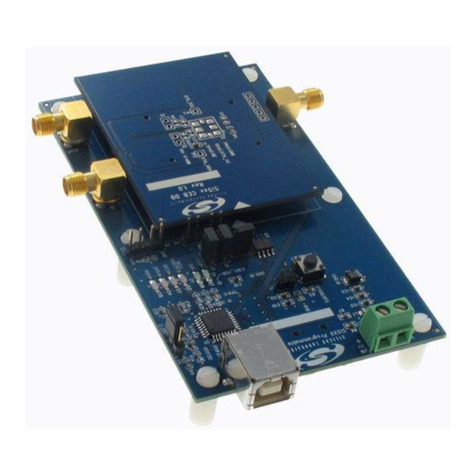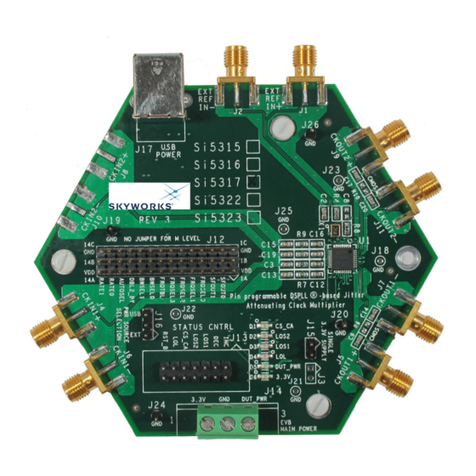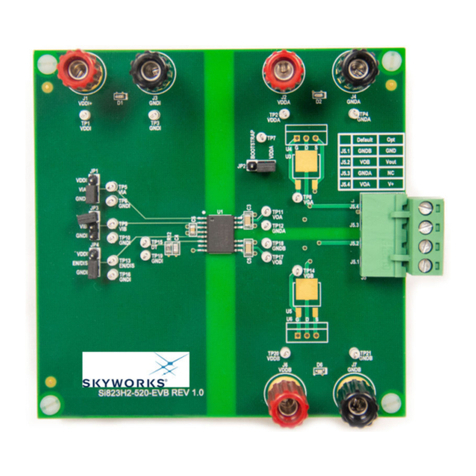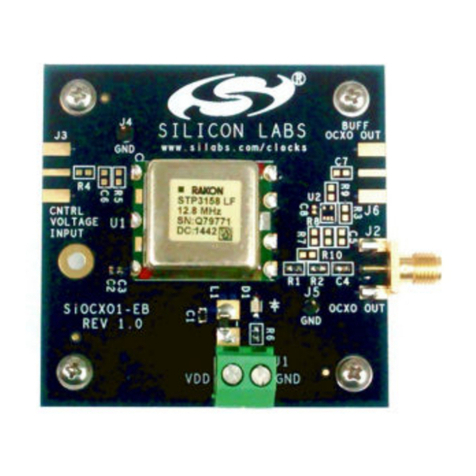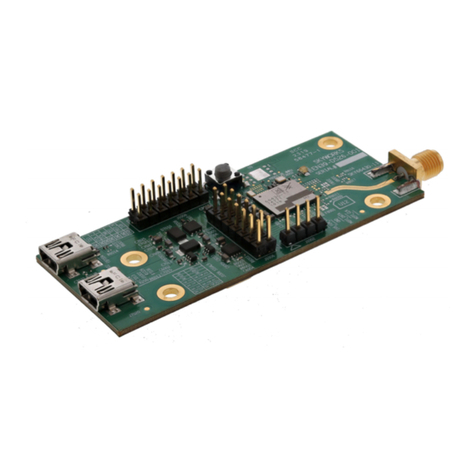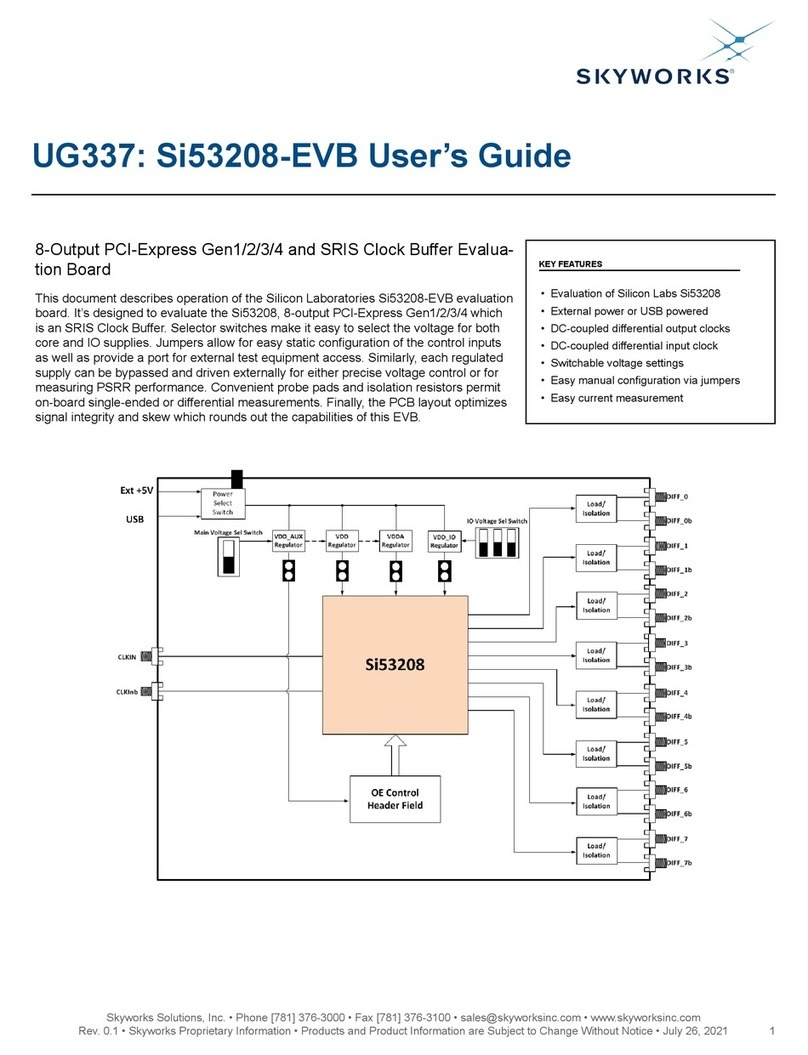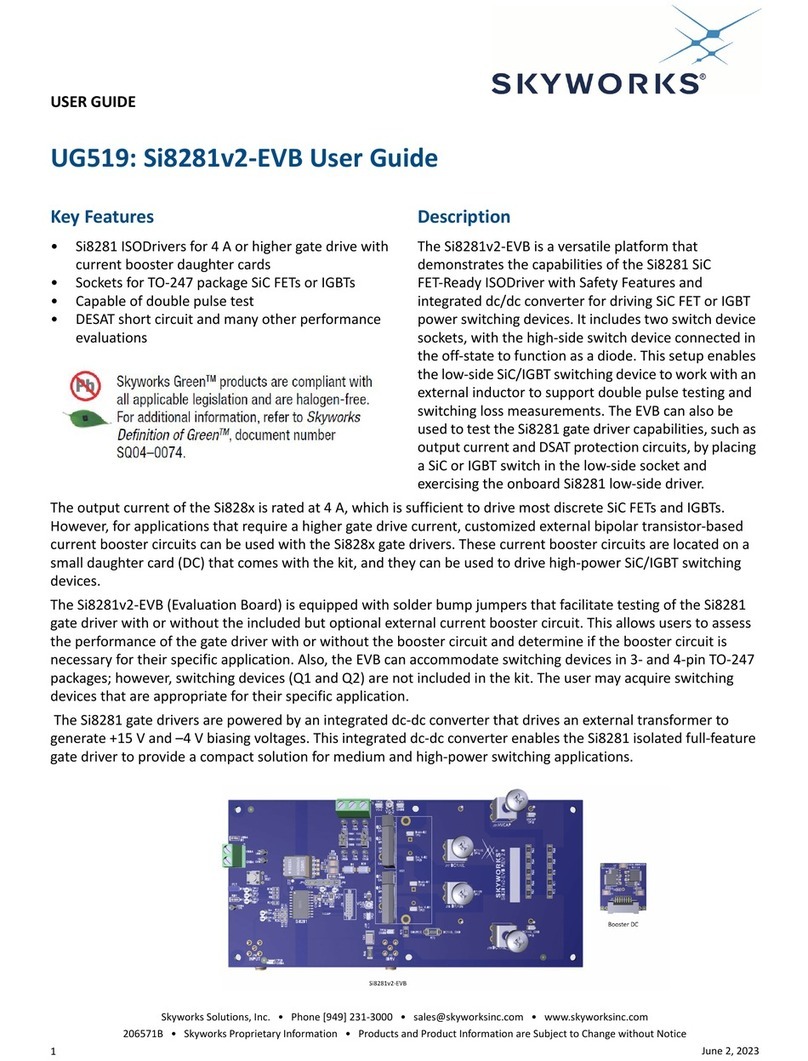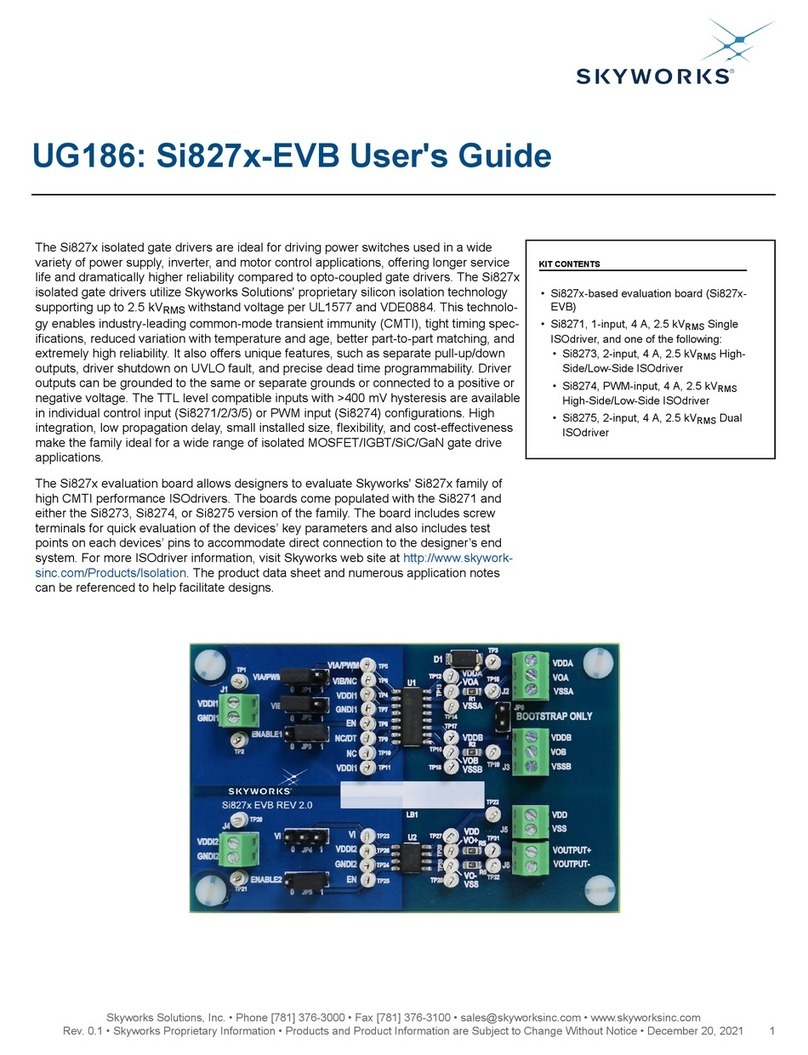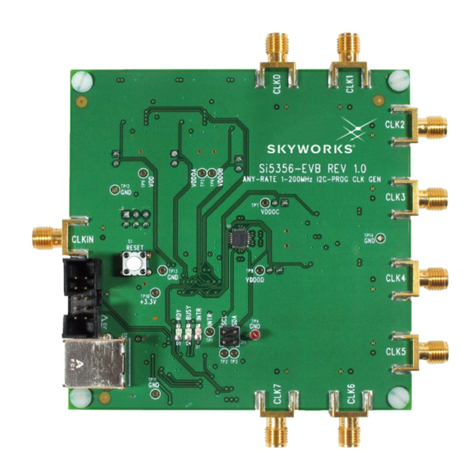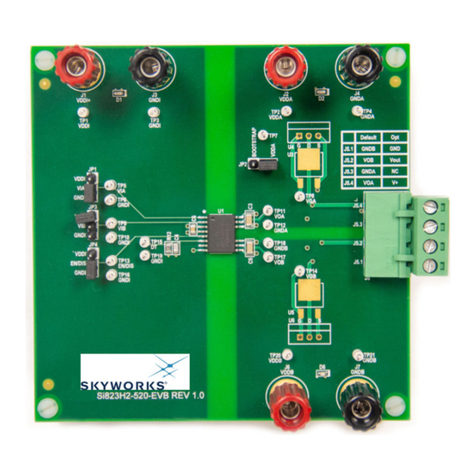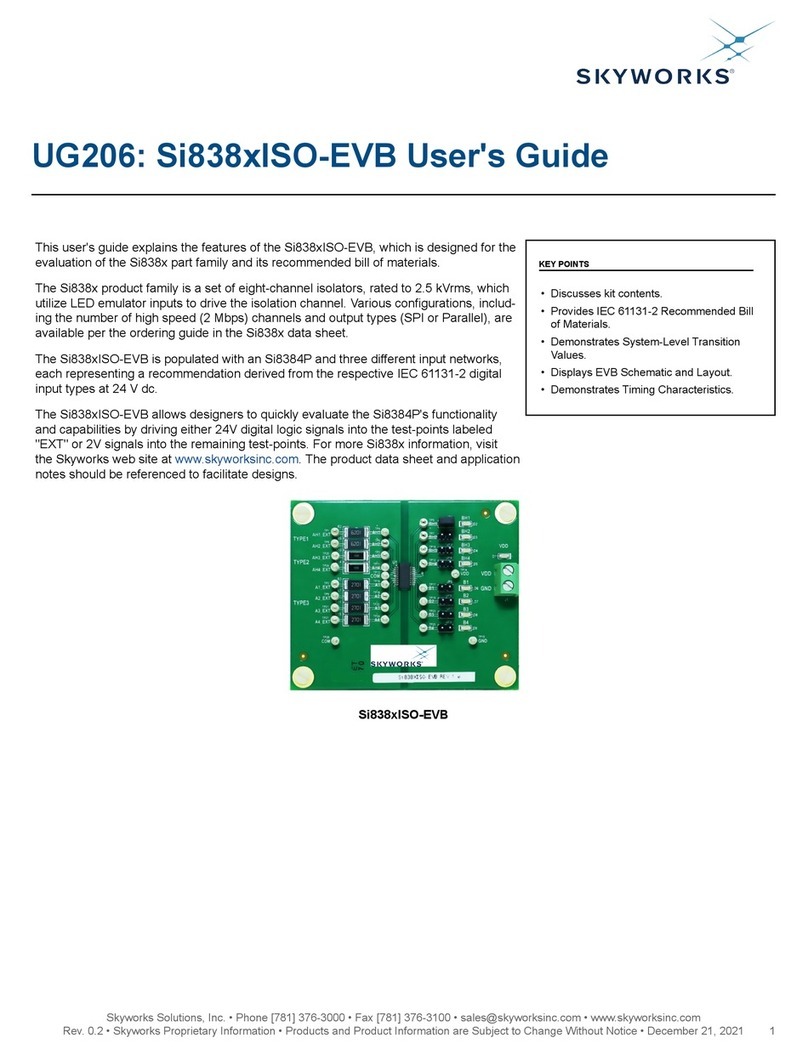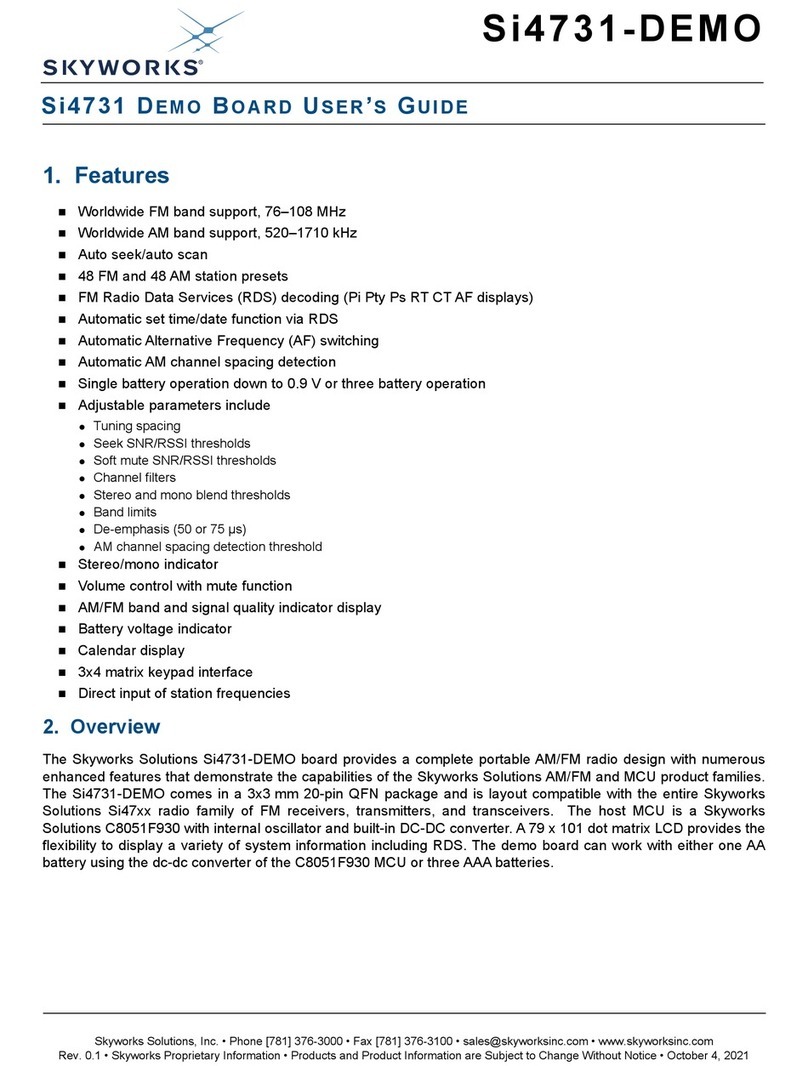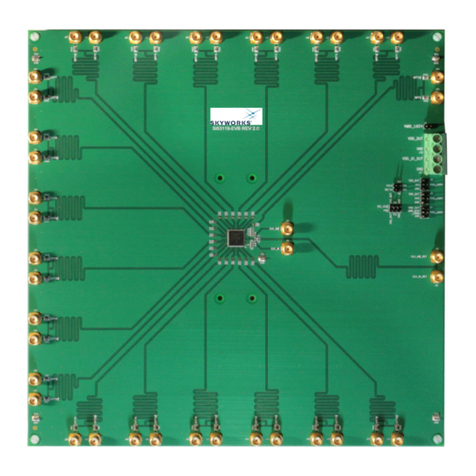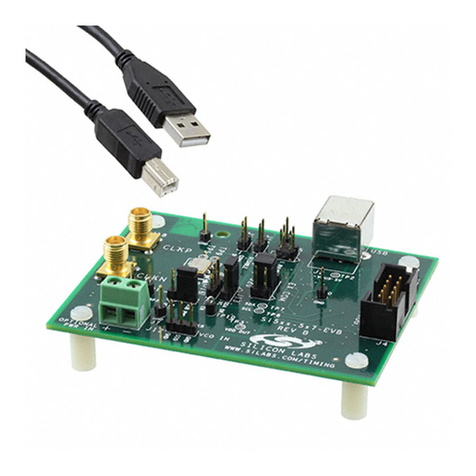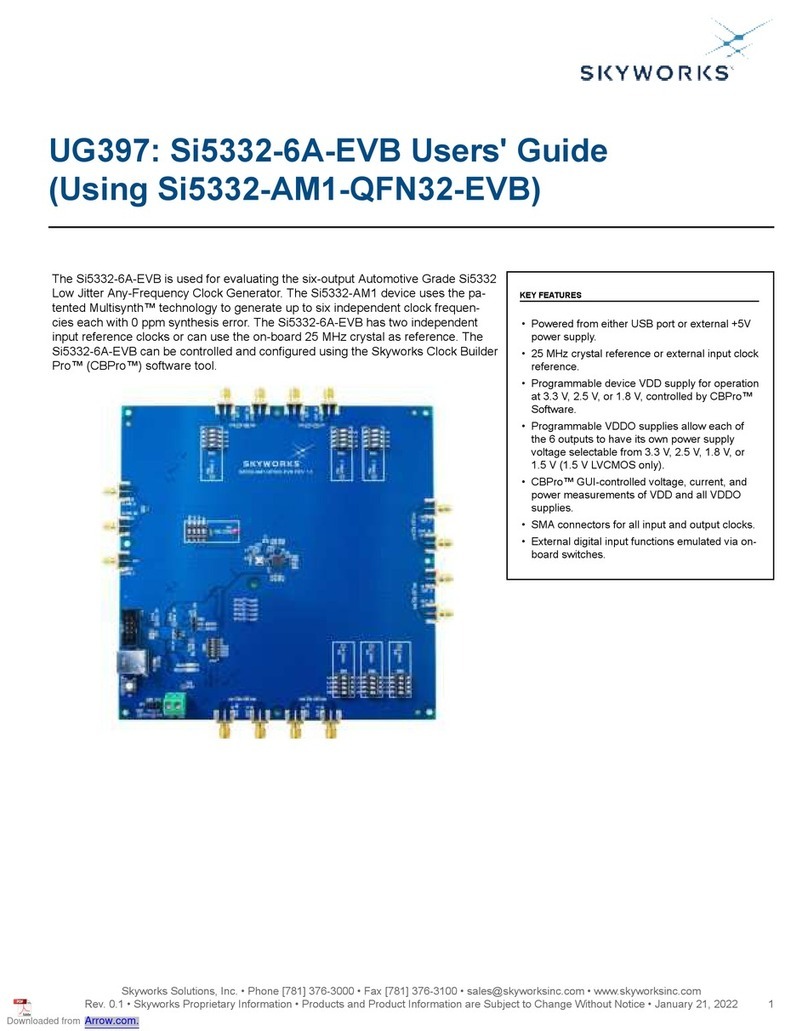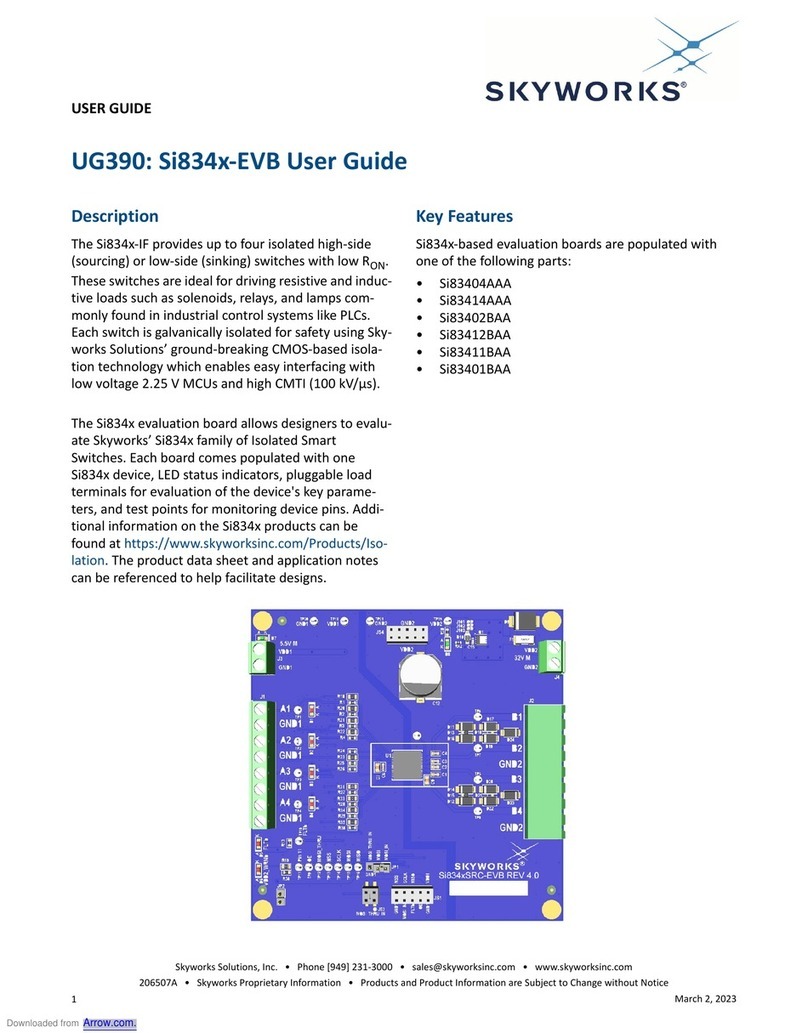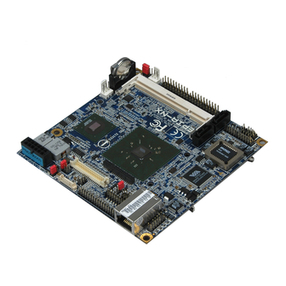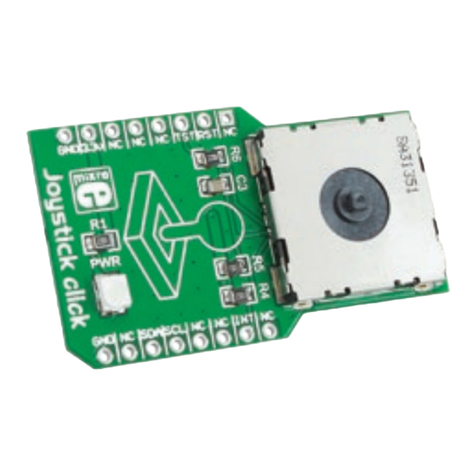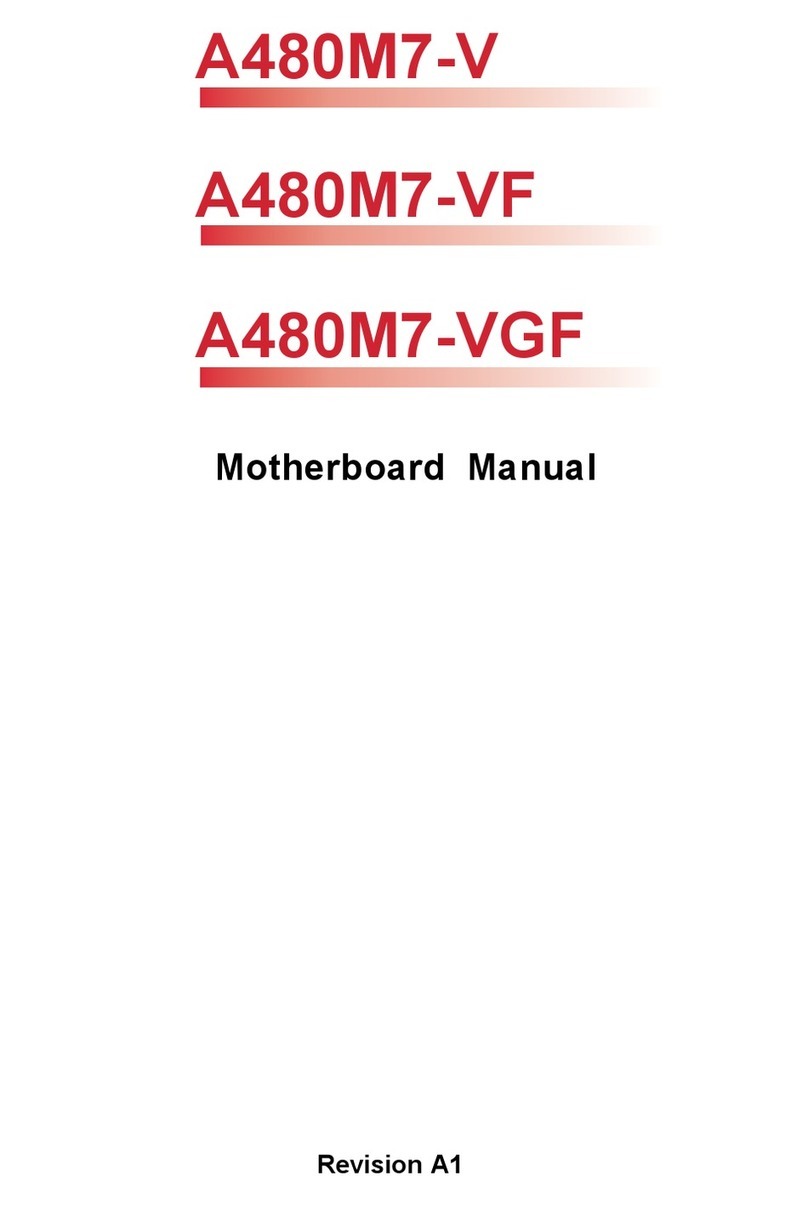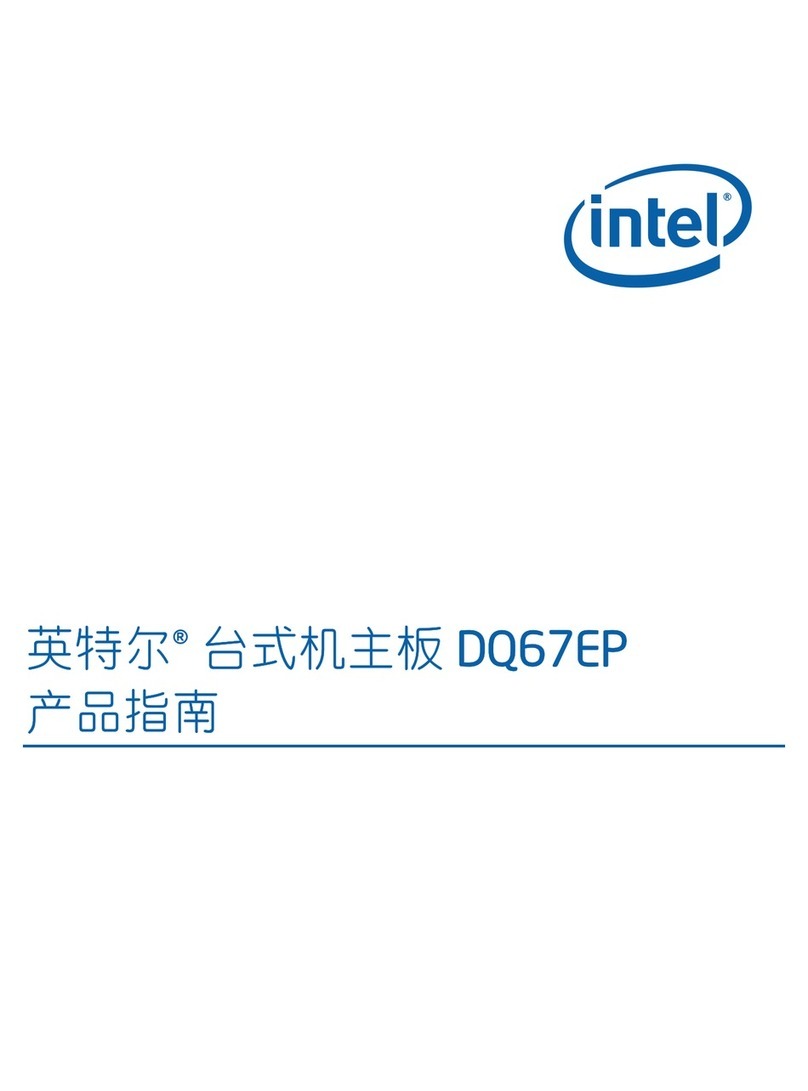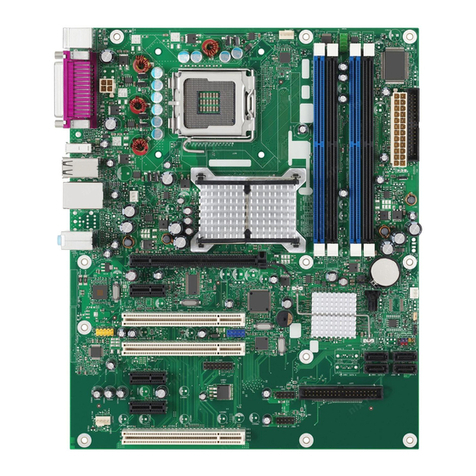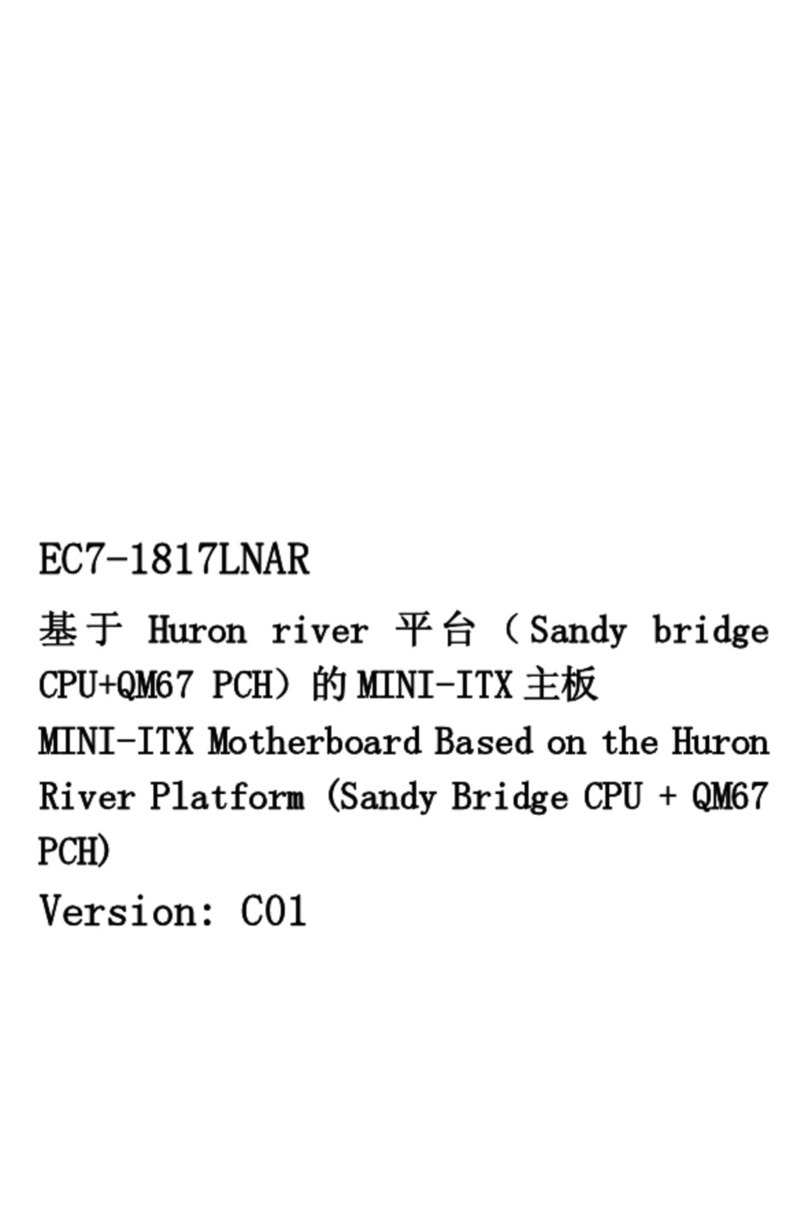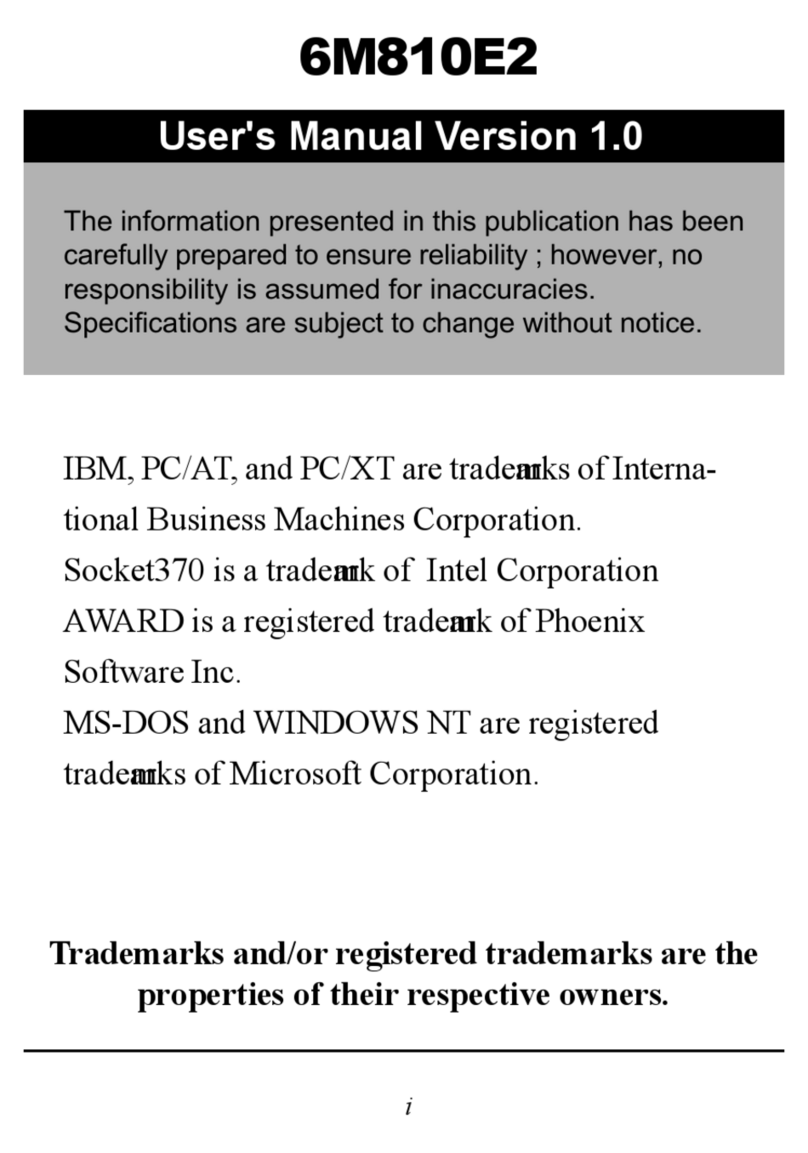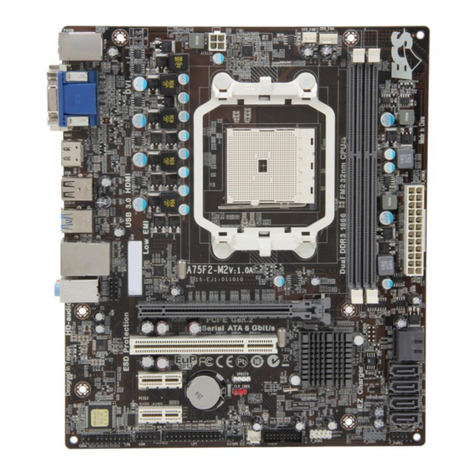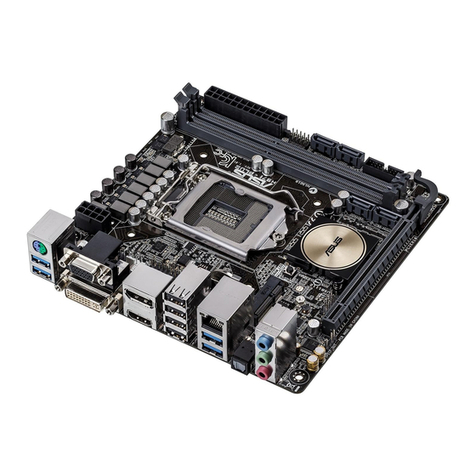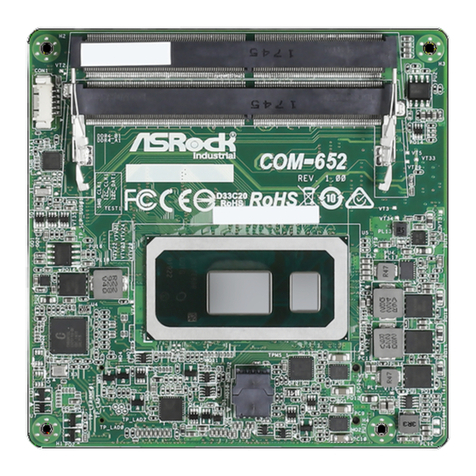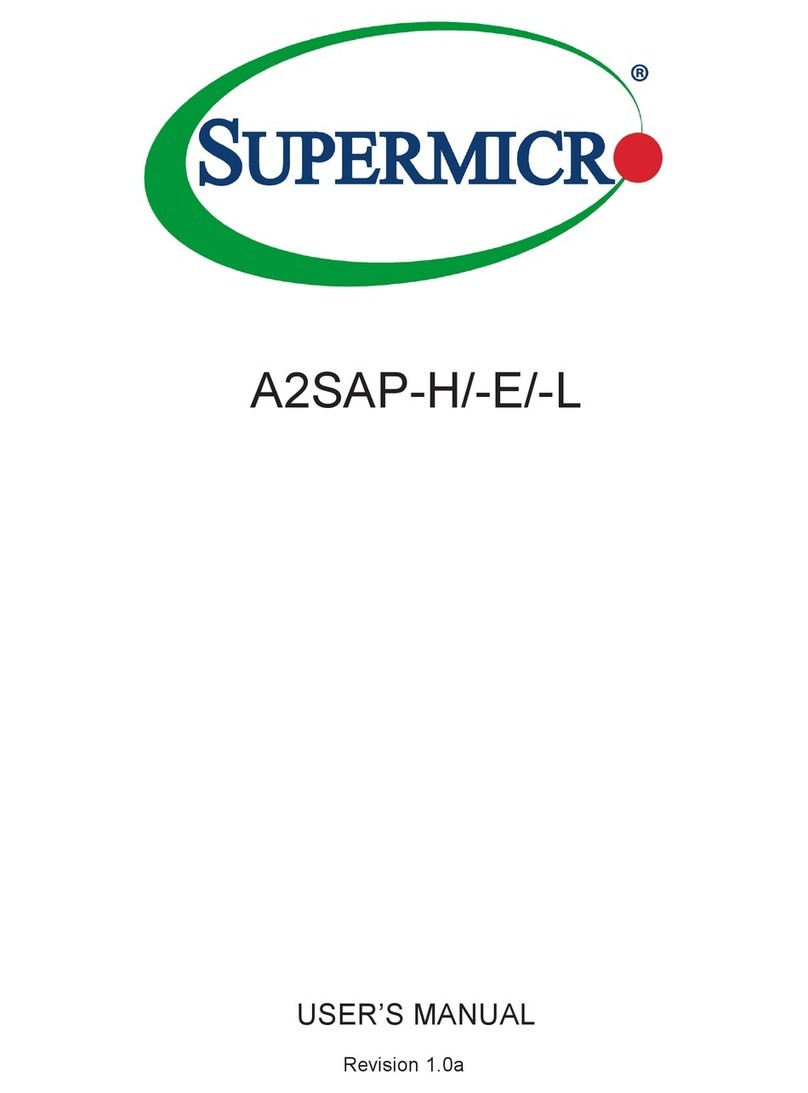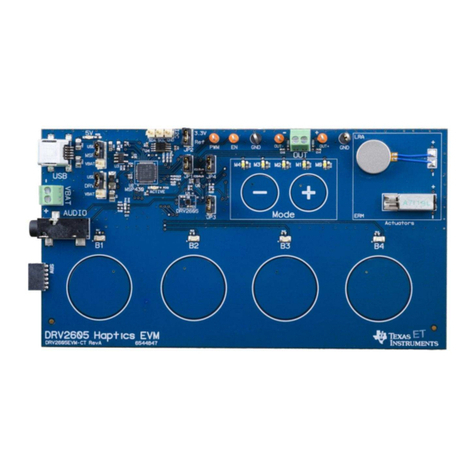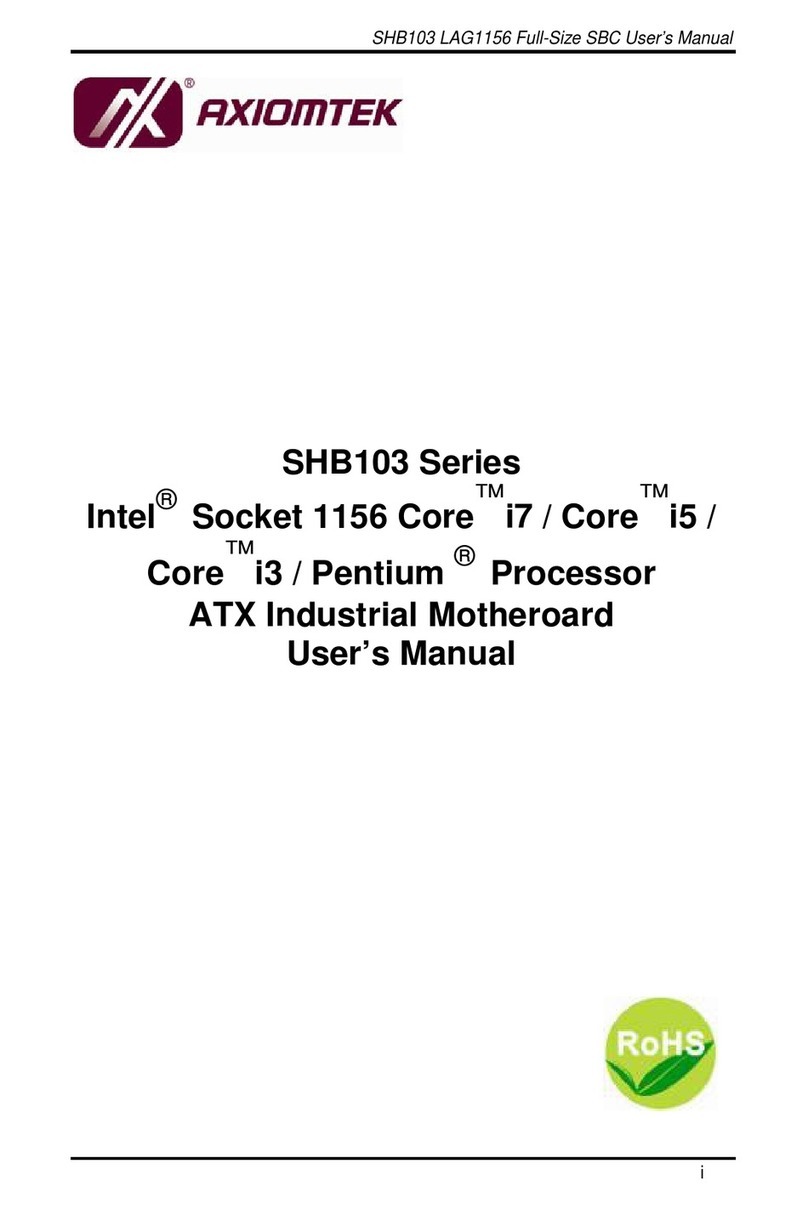
REFERENCE MANUAL Si5360
Skyworks
Solutions,
Inc.
•
Phone
[949]
23
1-3000
•
[email protected] •
www
.skyworksinc.com
206640A • Skyworks Proprietary Information • Products and Product Information are Subject to Change without Notice
5July 26, 2023
3. Dynamic Frequency Changes
Using a ClockBuilder Pro configuration, the Si5360 will have clock output at start up. After start up, dynamic fre-
quency changes can be made using either the Digitally-Controlled Oscillator (DCO) function for small changes, or
the Frequency-On-The-Fly (FOTF) function for larger changes.
3.1. Digitally-Controlled Oscillator (DCO) Functionality
For small changes in output frequency, the PLL in the Si5360 can be frequency controlled glitch-free in pre-defined
steps ranging from 1 ppt to several ppm using the DCO function. The DCO function has some limitations and the
user is advised to carefully review their configuration settings in the DCO Report, and to read the operating limita-
tions described in section 3.1.4. Limitations.
Using the DCO function it is possible to modify either the fractional MultiSynth dividers NA, NB or the PLL feed-
back divider M or all of the dividers. Modifying the PLL feedback M divider will change the frequency of all clock
outputs at once whereas modifying the NA or NB dividers will change only clock outputs using those specific
dividers. The DCO Report, available during DCO configuration with ClockBuilder Pro, shows what dividers are con-
figured to which control command.
For dividers NA and NB, the FINC_DCO/FDEC_DCO command is available by either GPIO assignment or API and
uses a fixed step size to operate on divider(s) selected in the ClockBuilder Pro configuration. The PLL M divider,
when set for FINC/FDEC control is only available to the API control and not the GPIO control.
The VARIABLE_OFFSET_DCO command available in the API is available to all dividers configured in ClockBuilder
Pro.
3.1.1. Using the Frequency Increment/Decrement DCO Function
The incremental DCO command FINC_DCO/FDEC_DCO is designed to control a specific divider with a preconfig-
ured step size change. Using the DCO configuration page of ClockBuilder Pro, the settings for the step size and
specific divider(s) enabled for the FINC_DCO/FDEC_DCO are entered.
Note that DCO control of the M divider changes all clock outputs. For this reason, if the M divider is selected for
control by FINC_DCO/ FDEC_DCO then dividers NA and NB cannot be enabled for this control at the same time.
Applying the FINC_DCO/FDEC_DCO command applies a frequency change equal to the specified step change.
Subsequent entry of the FINC_DCO/FDEC_DCO commands will increase or decrease the frequency by the same
amount. In other words, the output frequency changes are cumulative.
For NA and NB, the FINC_DCO/FDEC_DCO command may be configured to GPIO pins in ClockBuilder Pro. The
command may also be issued during operation using the ClockBuilder Pro API. For details of the Step Size and
which dividers are available to the FINC_DCO/FDEC_DCO command, review the DCO Report available at the DCO
page of ClockBuilder Pro.
3.1.2. Using the Variable DCO
The command VARIABLE_OFFSET_DCO is available through the ClockBuilder Pro API. For details of the step size
and dividers available to this command, see the DCO report available from the bottom of the DCO page in
ClockBuilder Pro or look at the Design Report.
In ClockBuilder Pro's evaluation board graphical user interface (EVB GUI), the API invocation restricts the variable
command to a single divider. However, the command is not restricted generally and all dividers that have been
configured in ClockBuilder Pro may be controlled by the user as described in the Si5360 API documentation.




















